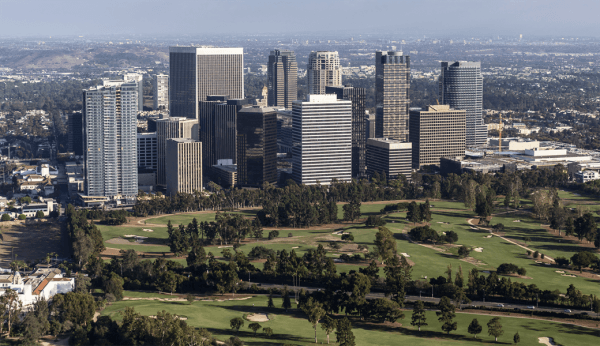The Los Angeles Basin is often thought of as a dry, smoggy, overdeveloped landscape. But a new study led by NOAA and the University of Colorado, Boulder shows that the manicured lawns, emerald golf courses and trees of America’s second-largest city have a surprisingly large influence on the city’s carbon emissions.
Working as part of the Megacities Carbon Project, scientists analyzed the carbon dioxide in around 500 air samples collected during 2015 from four sites around the basin for the presence of a rare radioactive isotope known as carbon-14. Carbon-14, or 14C, is found in living organisms, including vegetation. By contrast, fossil fuels, which are millions of years old, are totally depleted of 14C.
Megacities like LA contribute significantly to national and global CO2 emissions and are an increasingly important priority for mitigation efforts, the scientists said. The green spaces within megacities provide numerous benefits, including improving air quality, capturing runoff, moderating temperatures and offering outdoor recreation. So the ability to distinguish fossil fuel pollution from “natural” CO2 will be important for designing and evaluating urban pollution control strategies, the scientists said.
Lead author John Miller, a carbon cycle scientist with NOAA’s Global Monitoring Laboratory, said that when researchers disentangled the carbon dioxide generated by burning fossil fuels from the “natural” CO2, they found that LA’s vegetated landscape contributed substantially to the levels of CO2 around the city.
Continue reading at NOAA.
Image via NOAA.


